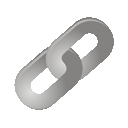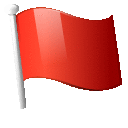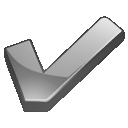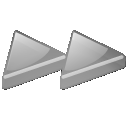Gazelle elements of style
Getting started
News
2/10/2015: Ajax filters Update your method: updateSelect()
Maven
First add the following code in the project-war/pom.xml<dependency>
<groupId>net.ihe.gazelle</groupId>
<artifactId>gazelle-assets</artifactId>
<version>2.0.0-SNAPSHOT</version>
<type>war</type>
</dependency>Web.xml
To fully enjoy the new style you need to desactivate richFaces (old) style.Edit your web.xml file and change the org.richfaces.skin value to plain
<context-param>
<param-name>org.richfaces.skin</param-name>
<param-value>plain</param-value>
</context-param>
<context-param>
<param-name>org.richfaces.enableControlSkinning</param-name>
<param-value>false</param-value>
</context-param>
<context-param>
<param-name>org.richfaces.enableControlSkinningClasses</param-name>
<param-value>false</param-value>
</context-param>
Xhtml
Second include the stylesheet and javascript<h:outputStylesheet library="stylesheet" name="gazelle-theme.css"/>
<h:outputScript library="jscript" name="jquery_1_11_2.min.js"/>
<h:outputScript library="jscript" name="bootstrap.min.js"/>Warning
Jquery imported by richfaces (very old version) may conflict with Jquery imported by Bootstrap.
If you experience strange behaviors with javascript boostrap components or richfaces javascript actions it could be because of it.
You can use this snippet as a workaround:<script type="text/javascript">
jq162 = jQuery.noConflict(true);
</script>Then, use jq162('#id') instead of $('#id') to select elements with
jquery.
Optional
DropDown menu:<h:outputStylesheet library="stylesheet" name="bootstrap_dropdown.css"/><h:outputStylesheet library="stylesheet" name="spectrum.css"/>
<h:outputScript library="jscript" name="spectrum.js"/>gri namespace
If you want to use gri components (gri:panel, gri:popupPanel, etc) you need to include the namespace gri into the root of your xhtml page : namespace : xmlns:gri="http://java.sun.com/jsf/composite/gri"
Page template
<!DOCTYPE html>
<html xmlns:ui="http://java.sun.com/jsf/facelets"
xmlns:h="http://java.sun.com/jsf/html" xmlns:g="http://www.ihe.net/gazelle"
xmlns:a4j="http://richfaces.org/a4j" xmlns:s="http://jboss.org/schema/seam/taglib"
xmlns:rich="http://richfaces.org/rich" xmlns:c="http://java.sun.com/jstl/core"
xmlns:f="http://java.sun.com/jsf/core" xmlns="http://www.w3.org/1999/xhtml">
<h:head>
<meta charset="utf-8"/>
<meta http-equiv="X-UA-Compatible" content="IE=edge"/>
<meta name="viewport" content="width=device-width, initial-scale=1"/>
<h:outputStylesheet library="stylesheet" name="gazelle-theme.css"/>
<h:outputStylesheet library="stylesheet" name="status.css"/>
<title>${pageNameTitle}</title>
<ui:insert name="header"/>
<h:outputScript library="jscript" name="gazelleTools.js"/>
<h:outputScript library="jscript" name="jquery_1_11_2.min.js"/>
<h:outputScript library="jscript" name="bootstrap.min.js"/>
</h:head>
<h:body>
<f:view>
<ui:include src="/ajaxStatus.xhtml"/>
<ui:include src="/layout/menu/_menu.xhtml"/>
<!-- gzl-container used to place and center content -->
<div id="gzl-container">
<div class="row">
<div class="center-block gazelle-alert">
<s:decorate id="gazelle-messages">
<rich:messages globalOnly="true" escape="false"
styleClass="fade-out-up text-center"
infoClass="alert gzl-alert-green animated-fast"
warnClass="alert gzl-alert-orange animated-slow"
errorClass="alert gzl-alert-red animated-slow">
</rich:messages>
</s:decorate>
</div>
</div>
<ui:insert name="body"/>
</div>
<ui:include src="footer/footer.xhtml"/>
<ui:include src="_scrollup.xhtml"/>
</f:view>
</h:body>
<h:outputScript library="jscript" name="ie10-viewport-bug-workaround.js"/>
</html>
Change menu color
To change the menu color include <h:outputScript library="jscript" name="applicationColor.js"/>
in your template
Call at the top of your body
<script type="text/javascript">
setApplicationColor('#5522ff');
</script>
Alert
Include the alert stylesheet.
<h:outputStylesheet library="stylesheet" name="alert.css"/>And add the following block inside of #gzl-container div.
<div class="row">
<div class="center-block gazelle-alert">
<s:decorate id="gazelle-messages">
<rich:messages globalOnly="true" escape="false"
styleClass="fade-out-up text-center"
infoClass="alert gzl-alert-green animated-fast"
warnClass="alert gzl-alert-orange animated-slow"
errorClass="alert gzl-alert-red animated-slow">
</rich:messages>
</s:decorate>
</div>
</div>To use it please update gazelle-tools and update faces-config.xml
Add xmlns:cdk="http://jboss.org/schema/richfaces/cdk/extensions" and the renderer
<faces-config version="2.1"
xmlns="http://java.sun.com/xml/ns/javaee"
xmlns:xsi="http://www.w3.org/2001/XMLSchema-instance"
xmlns:cdk="http://jboss.org/schema/richfaces/cdk/extensions"
xsi:schemaLocation="http://java.sun.com/xml/ns/javaee http://java.sun.com/xml/ns/javaee/web-facesconfig_2_1.xsd">
<render-kit>
...
<renderer>
<component-family>javax.faces.Messages</component-family>
<renderer-type>org.richfaces.MessagesRenderer</renderer-type>
<renderer-class>net.ihe.gazelle.common.bootstrapComponent.HtmlMessagesRenderer</renderer-class>
<renderer-extension>
<cdk:renders-children>false</cdk:renders-children>
</renderer-extension>
</renderer>
...
</render-kit>
</faces-config>
Menu
<ui:decorate template="_menu_template.xhtml">
<ui:define name="menu_title">
<h:outputText styleClass="navbar-brand" value="Brand"/>
</ui:define>
<ui:define name="menu_logo">
<h:outputText value="Logo"/>
</ui:define>
<ui:define name="menu_navigation_links">
<li><a href="#">
<h:outputText value="Nav link"/>
</a>
</li>
</ui:define>
<ui:define name="menu_search_box">
<h:outputText value=" search box"/>
</ui:define>
<ui:define name="menu_user_actions_right">
<li><a href="#">
<h:outputText value="user related actions"/>
</a>
</li>
</ui:define>
</ui:decorate>
gri:menu
Another way to define a menu for the same rendering is to use gri:menu and gri:menuItem.
Here is an example of use of these components :
<gri:menu name="Brand" homeURL="/Brand/">
<f:facet name="logo">
<h:outputText value="logo"/>
</f:facet>
<gri:menuItem>
<h:outputText value="Nav menu" />
<gri:menuItem>
<h:outputText value="Nav sub-menu" />
<gri:menuItem>
<h:outputText value="Nav sub-sub-menu 1" />
</gri:menuItem>
<gri:menuItem>
<h:outputText value="Nav sub-sub-menu 2" />
</gri:menuItem>
</gri:menuItem>
</gri:menuItem>
<gri:menuItem url="/Brand/usageStatistics.seam">
<h:outputText value="Statistics" />
</gri:menuItem>
<f:facet name="right">
<gri:menuItem url="/Brand/usageStatistics2.seam">
<h:outputText value="Statistics-bis" />
</gri:menuItem>
<ui:include src="login.xhtml"/>
</f:facet>
</gri:menu>Each of gri:menu and gri:menuItem support a list of attributes and facets :
| Attributes and Facets for gri:menu |
||||
|---|---|---|---|---|
| Attribute | required | default | Type | Description |
| logo | false | Facet | add a logo in the top right cornet (an icon, etc) | |
| right | false | Facet | specify a right level menu (like Login/Logout, admin, etc) | |
| name | false | java.lanf.String | specify the name of the application. Will be shown in the top left corner. | |
| homeURL | false | java.lanf.String | specify the URL to the home page of the application. Will be used when you click on the name of the application in the top left corner. | |
| rendered | false | true | javax.el.ValueExpression (evaluated as boolean) |
rendered attribute |
| Attributes and Facets for gri:menuItem |
||||
|---|---|---|---|---|
| Attribute | required | default | Type | Description |
| url | false | String | The URL that will be opened by clicking on the menu | |
| target | false | String | Specify if we want to open in another panel (example: target="_blank") | |
| icon | false | String | Specify the icon of the menu | |
| rendered | false | true | javax.el.ValueExpression (evaluated as boolean) |
rendered attribute |
Navigation links
Pure html
Please follow bootstrap documentationGenerated with java
Gazelle assets provides a template for generated menu: _generate_navigation_links.xhtml
<ui:include src="_generate_navigation_links.xhtml">
<ui:param name="menu" value="#{applicationManager.getMenu()}"/>
<ui:param name="url_base_name" value="#{applicationPreferenceManager.getApplicationUrlBaseName()}"/>
</ui:include>This generator can be used with Font-Awesome icons instead of images. To do so, set the Font-Awesome icon
style class as image path in Pages.java, then use the icon template
/layout/menu/_fontawesome_icon_template.xhtml:
<ui:include src="_generate_navigation_links.xhtml">
<ui:param name="menu" value="#{applicationManager.getMenu()}"/>
<ui:param name="url_base_name" value="#{applicationPreferenceManager.getApplicationUrlBaseName()}"/>
<ui:param name="icon_template" value="/layout/menu/_fontawesome_icon_template.xhtml"/>
</ui:include>The icon_template parameter is optional, default value is /layout/menu/_image_icon_template.xhtml
Footer
<ui:decorate template="_default_footer_template.xhtml">
<ui:param name="applicationName" value="Super application"/>
<ui:param name="version" value="${build.version}"/>
<ui:param name="buildProfiles" value="${build.maven.execution.profiles.active}"/>
<ui:param name="buildDate" value="${build.date.full}"/>
<ui:param name="buildYear" value="${build.year}"/>
<ui:param name="releaseNoteUrl" value="release note url"/>
<ui:param name="documentationUrl" value="doc url"/>
<ui:param name="appAdminTitle" value="Admin title: IHE EU Manager or else"/>
<ui:param name="appAdminEmail" value="email address"/>
<ui:param name="appAdminName" value="Admin name"/>
<ui:param name="issueTrackerUrl" value="issue tracker url"/>
<ui:param name="displayApiLink" value="true"/>
</ui:decorate>
Icons
Classic icons
Image library has been moved into /resources. Use in xhtml to invoke images :
<h:graphicImage library="img" name="myImage.png"/>or
<h:graphicImage value="/resources/img/myImage.png"/>Font Awesome
Font awesome is a wide set of font flat icons.
Then use <i> or <span> element with the class
attribute to
insert an icon.
<button class="btn btn-default">
<span class="fa fa-question-circle"></span><h:outputText value="Help"/>
</button>Browse the whole icon set here.
To change font-awesome icons color, use bootstrap style classes :
- normal (no style class)
- gzl-text-blue
- gzl-text-green
- gzl-text-orange
- gzl-text-red
<ul class="list-unstyled">
<li><span class="fa fa-exclamation-triangle"></span>normal (no style class)</li>
<li><span class="fa fa-exclamation-triangle gzl-text-blue"></span>gzl-text-blue</li>
<li><span class="fa fa-exclamation-triangle gzl-text-green"></span>gzl-text-green</li>
<li><span class="fa fa-exclamation-triangle gzl-text-orange"></span>gzl-text-orange</li>
<li><span class="fa fa-exclamation-triangle gzl-text-red"></span>gzl-text-red</li>
</ul>Those font color style classes can also be applied on text.
To force pointer cursor on icons add: gzl-icon-action class to icons
Icon example table
| Action | Image | Font | ||
|---|---|---|---|---|
| Icon | Location | Icon | Style class | |
| Add |

|
/resources/img/add.gif | gzl-icon-plus | |
| Ajax loader | resources/loading/ajax-loader.gif | gzl-icon-ajax-loading | ||
| Back | gzl-icon-back | |||
| Ban | gzl-icon-ban | |||
| Bug | gzl-icon-bug | |||
| Calendar | gzl-icon-calendar | |||
| Cancel |
|
/resources/img/icons64/button_cancel.gif | gzl-icon-times-circle | |
| Collapse | gzl-icon-collapse | |||
| Comment | gzl-icon-comment-o | |||
| Configure |
|
/resources/img/icons22/configure.gif | gzl-icon-gears | |
| Copy/Duplicate |

|
/resources/img/editcopy.gif | gzl-icon-files-o | |
| Database |
|
/resources/img/icons22/db_add.png | gzl-icon-database | |
| Delete |
|
/resources/img/icons64/deleteRedJR.gif | gzl-icon-trash-o | |
| Delete |
|
/resources/img/icons22/deleteJR.gif" | gzl-icon-times-blue | |
| Documentation |
|
/resources/img/icons22/doc.png | gzl-icon-book | |
| Down | gzl-icon-down | |||
| Download |
|
/resources/img/icons64/bottomJR.gif | gzl-icon-download | |
| Edit |
|
/resources/img/icons64/edit.gif | gzl-icon-pencil | |
|
|
/resources/img/icons22/email.gif | gzl-icon-email | ||
| Empty/Erase | gzl-icon-eraser | |||
| Excel |

|
/resources/img/xls.gif | gzl-icon-file-excel-o | |
| Execute |

|
/resources/img/run.gif | gzl-icon-play-blue | |
| Expand | gzl-icon-expand | |||
| Failed |

|
/resources/img/status/failed.gif | gzl-icon-times | |
| Filter |

|
/resources/img/filter.png | gzl-icon-filter | |
| Folder |
|
/resources/img/icons22/resources.png | gzl-icon-folder-open | |
| Help |
|
resources/img/icons22/helpJR.gif | gzl-icon-question-circle | |
| Hide |

|
resources/img/folder_50_50.png | gzl-icon-eye-slash | |
| Info circle | gzl-icon-info-circle | |||
| Internet (world) |
|
resources/img/icons22/Crystal_Clear_app_internet.gif | gzl-icon-globe | |
| Institution | gzl-icon-institution | |||
| Link |

|
/resources/img/link.gif | gzl-icon-link | |
| Load |

|
/resources/img/load64.gif | gzl-icon-arrow-circle-down | |
| Logs/History |

|
/resources/img/logs.png | gzl-icon-history | |
| Merge |

|
/resources/img/merge.png | gzl-icon-compress | |
| Patients |

|
/resources/img/status/patients.gif | gzl-icon-users | |
| Passed |

|
/resources/img/status/verified.gif | gzl-icon-checked | |
| gzl-icon-pdf | ||||
| Preferences | gzl-icon-preferences | |||

|
/resources/img/printer.gif | gzl-icon-print | ||
| Private or secure |
|
/resources/img/icons64/lock.gif | gzl-icon-lock | |
| Public | gzl-icon-unlock | |||
| Random | gzl-icon-random | |||
| Refresh | gzl-icon-refresh | |||
| release |

|
/resources/img/release.gif | gzl-icon-release | |
| Remove |
|
/resources/img/icons64/remove.gif | gzl-icon-minus | |
| Repeat | gzl-icon-repeat | |||
| Reset |

|
/resources/img/reset.png | gzl-icon-undo | |
| Register |

|
/resources/img/menu/document-edit.png | gzl-icon-register | |
| Restore |
|
/resources/img/icons22/restore.gif | gzl-icon-undo | |
| Run off |

|
/resources/img/runOff.gif | gzl-icon-not-checked | |
| Sample |
|
resources/img/icons22/sample.gif | gzl-icon-sample | |
| Save | gzl-icon-save | |||
| Send | gzl-icon-paper-plane | |||
| Share |

|
/resources/img/share_patient.gif | gzl-icon-share-alt | |
| Skip |

|
resources/img/skip.gif | gzl-icon-forward | |
| Skip off |

|
resources/img/skipOff.gif | gzl-icon-forward-off | |
| Start | resources/img/powerOn.gif | gzl-icon-play | ||
| Start off | resources/img/launchOff.gif | gzl-icon-play-black | ||
| Stop | resources/img/powerOff.gif | gzl-icon-stop | ||
| Statistics |
|
/resources/img/icons22/stats.png | gzl-icon-pie-chart | |
| Status blue |
|
resources/img/icons22/status_blue.gif | gzl-icon-circle-blue | |
| Status green |
|
resources/img/icons22/status_grass.gif | gzl-icon-circle-green | |
| Status purple |
|
resources/img/icons22/status_purple.gif | gzl-icon-circle-purple | |
| Status red |
|
resources/img/icons22/status_red.gif | gzl-icon-circle-red | |
| Suggest |

|
/resources/img/suggest.png | gzl-icon-caret-down | |
| System |
|
resources/img/icons22/systems.gif | gzl-icon-system | |
| Task | gzl-icon-tasks | |||
| Text file | gzl-icon-file-text-o | |||
| Up | gzl-icon-up | |||
| Upload | gzl-icon-upload | |||
| User | gzl-icon-user | |||
| Users | gzl-icon-users | |||
| View |
|
/resources/img/icons64/kfind.gif | gzl-icon-search | |
| Visible |

|
resources/img/folder_shared_50_50.png | gzl-icon-eye | |
| Warning |
|
resources/img/icons64/warning.gif | gzl-icon-exclamation-triangle | |
| Worklist | gzl-icon-list | |||
| Xml | gzl-icon-xml | |||
| Zoom in |
|
/resources/img/icons22/zoom-in.gif | gzl-icon-zoom-in | |
| Zoom out |
|
/resources/img/icons22/zoom-out.gif | gzl-icon-zoom-out | |
Icon stack
You can stack icons to add meaning, for example:<span class="gzl-icon-stack">
<i class="gzl-icon-globe gzl-icon-stack-1x"></i>
<i class="gzl-icon-plus gzl-icon-stack-1x gzl-icon-stack-bottom-right"></i>
</span><span class="gzl-icon-stack">
<i class="gzl-icon-user gzl-icon-stack-1x"></i>
<i class="gzl-icon-ban gzl-icon-stack-1x text-danger gzl-icon-stack-bottom-right"></i>
</span>Attach an action on an icon
The following example code shows how to link a bean call and a popup display on a font-awesome icon
<h:commandLink title="Click me !" action="#{actionBean.methodName(params)}"
oncomplete="jq162('#iconPopup').modal('show');">
<span class="fa fa-pencil"></span>
</h:commandLink>
Labels
Default Info Success Warning Error
You can also use
Unknown Skipped Info Passed Warning Failed
Note that those classes match PASSED, Passed, and passed (the same for the other styles)
<h:outputText value="Info" styleClass="gzl-label gzl-label-blue"/> <h:outputText value="Success" styleClass="gzl-label gzl-label-green"/> <h:outputText value="Warning" styleClass="gzl-label gzl-label-orange"/> <h:outputText value="Error" styleClass="gzl-label gzl-label-red"/><h:outputText value="Unknown" styleClass="UNKNOWN"/> <h:outputText value="Skipped" styleClass="SKIPPED"/> <h:outputText value="Info" styleClass="Info"/> <h:outputText value="PASSED" styleClass="passed"/> <h:outputText value="WARNING" styleClass="WARNING"/> <h:outputText value="ERROR" styleClass="Error"/>
Panel
A simple panel
<ui:decorate template="/layout/panels/_panel.xhtml">
<h:outputText value="Panel body"/>
</ui:decorate><gri:panel>
<h:outputText value="Panel body"/>
</gri:panel>
Panel with title
Panel title
<ui:decorate template="/layout/panels/_panel_title.xhtml">
<ui:define name="panel_title">
<h:outputText value="Panel title"/>
</ui:define>
<h:outputText value="Panel body"/>
</ui:decorate><gri:panel>
<f:facet name="header">
<h:outputText value="Panel title"/>
</f:facet>
<h:outputText value="Panel body"/>
</gri:panel>
Panel with footer
<ui:decorate template="/layout/panels/_panel_footer.xhtml">
<h:outputText value="Panel body"/>
<ui:define name="panel_footer">
<h:outputText value="Panel footer"/>
</ui:define>
</ui:decorate><gri:panel>
<h:outputText value="Panel body"/>
<f:facet name="footer">
<h:outputText value="Panel footer"/>
</f:facet>
</gri:panel>
Panel with title and footer
Panel title
<ui:decorate template="/layout/panels/_panel_title_footer.xhtml">
<ui:define name="panel_title">
<h:outputText value="Panel title"/>
</ui:define>
<h:outputText value="Panel body"/>
<ui:define name="panel_footer">
<h:outputText value="Panel footer"/>
</ui:define>
</ui:decorate><gri:panel>
<f:facet name="header">
<h:outputText value="Panel title"/>
</f:facet>
<h:outputText value="Panel body"/>
<f:facet name="footer">
<h:outputText value="Panel footer"/>
</f:facet>
</gri:panel>
Panel with id
Sometimes it is necessary to have an id to perform actions (such a render). So each panel template is
derivated to a version with id. As example, the template /layout/panels/panel_title.xhtml
become /layout/panels/_panel_title_id.xhtml. In those id versions, the declaration of the
parameter panel_id is mandatory.
If you are using gri:panel, the attribute to use is pid
Panel title
<ui:decorate template="/layout/panels/_panel_title_id.xhtml">
<ui:param name="panel_id" value="UploadTestsPanel"/>
<ui:define name="panel_title">
<h:outputText value="Panel title"/>
</ui:define>
<h:outputText value="Panel body"/>
</ui:decorate><gri:panel pid="UploadTestsPanel">
<f:facet name="header">
<h:outputText value="Panel title"/>
</f:facet>
<h:outputText value="Panel body"/>
</gri:panel>
Panel collapse
The panel is closed by default but can be opened by setting openByDefault to
true.
The parameter panel_id is mandatory.
<ui:decorate template="/layout/panels/_panel_collapse.xhtml">
<ui:param name="panel_id" value="collapsed_panel"/>
<ui:param name="openByDefault" value="false"/>
<ui:define name="panel_title">
<h:outputText value="Click me !"/>
</ui:define>
<h:outputText value="Panel body"/>
</ui:decorate>Styling panels using param styleClass
Each panel template can be styled using bootstrap classes. Add the following parameters :
styleClassto add class to the overall panelheadingStyleClassto add class to the panel titlebodyStyleClassto add class to the panel bodyfooterStyleClassto add class to the panel footer
If you are using gri:panel, the attributes are respectively: styleClass,
headerClass, bodyClass, footerClass
Panel title
<ui:decorate template="/layout/panels/_panel_title_footer.xhtml">
<ui:param name="styleClass" value="panel-info"/>
<ui:define name="panel_title">
<h:outputText value="Panel title"/>
</ui:define>
<h:outputText value="Panel body"/>
<ui:param name="footerStyleClass" value="text-right"/>
<ui:define name="panel_footer">
<h:outputText value="Panel footer"/>
</ui:define>
</ui:decorate><gri:panel styleClass="panel-info" footerClass="text-right"/>
<f:facet name="header">
<h:outputText value="Panel title"/>
</f:facet>
<h:outputText value="Panel body"/>
<f:facet name="footer">
<h:outputText value="Panel footer"/>
</f:facet>
</gri:panel>Tabs
Tabs are strict bootstrap code. See more documentation here.
<ul class="nav nav-tabs" role="tablist">
<li role="presentation" class="active">
<a href="#home" aria-controls="home" role="tab" data-toggle="tab">Home</a>
</li>
<li role="presentation">
<a href="#profile" aria-controls="profile" role="tab" data-toggle="tab">Profile</a>
</li>
<li role="presentation">
<a href="#messages" aria-controls="messages" role="tab" data-toggle="tab">Messages</a>
</li>
</ul>
<div class="tab-content">
<div role="tabpanel" class="tab-pane active" id="home">
Here comes the content of the #home panel...
</div>
<div role="tabpanel" class="tab-pane" id="profile">
Here comes the content of the #profile panel
</div>
<div role="tabpanel" class="tab-pane" id="messages">
Here comes the content of the #messages panel
</div>
</div>Add a border and a padding arround the tab content using the Gazelle style class
.tab-content-with-border.
<ul class="nav nav-tabs" role="tablist">
<li role="presentation" class="active">
<a href="#home" aria-controls="home" role="tab" data-toggle="tab">Home</a>
</li>
<li role="presentation">
<a href="#profile" aria-controls="profile" role="tab" data-toggle="tab">Profile</a>
</li>
<li role="presentation">
<a href="#messages" aria-controls="messages" role="tab" data-toggle="tab">Messages</a>
</li>
</ul>
<div class="tab-content tab-content-with-border">
<div role="tabpanel" class="tab-pane active" id="home">
Here comes the content of the #home panel...
</div>
<div role="tabpanel" class="tab-pane" id="profile">
Here comes the content of the #profile panel
</div>
<div role="tabpanel" class="tab-pane" id="messages">
Here comes the content of the #messages panel
</div>
</div>gri:tabPanel
Another way to define a tabPanel for the same rendering is to use gri:tabPanel and gri:tab.
Both examples before can be written like this :
<gri:tabPanel>
<gri:tab head="home">
Here comes the content of the #home panel...
</gri:tab>
<gri:tab head="profile">
Here comes the content of the #profile panel...
</gri:tab>
<gri:tab head="messages">
Here comes the content of the #messages panel...
</gri:tab>
</gri:tabPanel>
<gri:tabPanel withBorder="true">
<gri:tab head="home">
Here comes the content of the #home panel...
</gri:tab>
<gri:tab head="profile">
Here comes the content of the #profile panel...
</gri:tab>
<gri:tab head="messages">
Here comes the content of the #messages panel...
</gri:tab>
</gri:tabPanel>
Each of gri:tabPanel and gri:tab support a list of attributes :
| Attributes for gri:tabPanel |
||||
|---|---|---|---|---|
| Attribute | required | default | Type | Description |
| withBorder | false | false | java.lang.Boolean | add .tab-content-with-border style class |
| activeItem | false | first tab | java.lang.String | SHALL be equal to one of the id of the gri:tab. When specified, the first tab opened will be the one having the id equal to the activeItem attribute |
| rendered | false | true | javax.el.ValueExpression (evaluated as boolean) |
rendered attribute |
| Attributes for gri:tab |
||||
|---|---|---|---|---|
| Attribute | required | default | Type | Description |
| head | true | java.lang.String | The name of the tab in the header. It may be a translated reference (ie like #{messages['....']}) | |
| id | false | java.lang.String | Will be used as the id of the component. If not specified an id is generated. | |
| onclick | false | java.lang.String | javascript executed when clicking on the header of the tab | |
| rendered | false | true | java.lang.String | rendered attribute |
Display
Simple display
First name: John
Surname: Smith
<s:decorate template="/layout/display/_display.xhtml">
<ui:define name="label">#{messages['net.ihe.gazelle.assets.FirstName']}</ui:define>
<h:outputText value="#{user.getFirstname()}"/>
</s:decorate>
<s:decorate template="/layout/display/_display.xhtml">
<ui:define name="label">#{messages['net.ihe.gazelle.assets.Surname']}</ui:define>
<h:outputText value="#{user.getSurname()}"/>
</s:decorate>Data list display
Elements must be wrapped into a <dl>...</dl> container.
- First name
- John
- Surname
- Smith
<dl>
<ui:decorate template="/layout/display/_data_list_item.xhtml">
<ui:define name="label">#{messages['net.ihe.gazelle.assets.FirstName']}</ui:define>
<h:outputText value="#{user.getFirstname()}"/>
</ui:decorate>
<ui:decorate template="/layout/display/_data_list_item.xhtml">
<ui:define name="label">#{messages['net.ihe.gazelle.assets.Surname']}</ui:define>
<h:outputText value="#{user.getSurname()}"/>
</ui:decorate>
</dl>
Horizontal and aligned data list display
Elements must be wrapped into a <dl class="dl-horizontal">...</dl>
container.
- First name
- John
- Surname
- Smith
<dl class="dl-horizontal">
<ui:decorate template="/layout/display/_data_list_item.xhtml">
<ui:define name="label">#{messages['net.ihe.gazelle.assets.FirstName']}</ui:define>
<h:outputText value="#{user.getFirstname()}"/>
</ui:decorate>
<ui:decorate template="/layout/display/_data_list_item.xhtml">
<ui:define name="label">#{messages['net.ihe.gazelle.assets.Surname']}</ui:define>
<h:outputText value="#{user.getSurname()}"/>
</ui:decorate>
</dl>
Styling data list
Parameters dt_styleClass and dd_styleClass can respectively be used to add
style class on title or data.
As example, to display a text label in a data list, set the CSS class .gzl-dd-label on
dd_styleClass to keep enough space around it.
- Server name
- TLSServer
- Status
- Running
- Connection attempts
- 307
- IP addresses
- 188.165.194.55 (ns312255.ovh.net)
<dl class="dl-horizontal">
<ui:decorate template="/layout/display/_data_list_item.xhtml">
<ui:define name="label">#{messages['net.ihe.gazelle.assets.ServerName']}</ui:define>
<h:outputText value="#{server.getName()}"/>
</ui:decorate>
<ui:decorate template="/layout/display/_data_list_item.xhtml">
<ui:define name="label">#{messages['net.ihe.gazelle.assets.Status']}</ui:define>
<ui:param name="dd_styleClass" value="gzl-dd-label"/>
<h:outputText value="#{server.getStatus()}" styleClass="gzl-label gzl-label-green"/>
</ui:decorate>
...
</dl>
Form
AddstyleClass="form-control" on the text inputs and use one of the following templates.
Simple form
<s:decorate template="/layout/form/_edit.xhtml">
<ui:param name="id" value="nameInput"/>
<ui:define name="label">Name</ui:define>
<h:inputText id="nameInput" value="#{user.name}"
required="true" styleClass="form-control"/>
</s:decorate>
<s:decorate template="/layout/form/_edit.xhtml">
<ui:param name="id" value="emailInput"/>
<ui:define name="label">Name</ui:define>
<h:inputText id="emailInput" value="#{user.email}"
required="true" styleClass="form-control"/>
</s:decorate>
<s:decorate template="/layout/form/_checkbox.xhtml">
<h:selectBooleanCheckbox value="#{user.subscriber}"/>
Subscribe newsletter
<h:outputText styleClass="help-block"
value="Can be modified later in users preferences."/>
</s:decorate>Inline form
Just wrap your inputs into <div class="form-inline">...</div>
<div class="form-inline">
<ui:decorate template="/layout/form/_edit.xhtml">
<ui:param name="id" value="nameInput"/>
<ui:define name="label">Name</ui:define>
<h:inputText id="nameInput" value="#{user.name}"
required="true" styleClass="form-control"/>
</ui:decorate>
<ui:decorate template="/layout/form/_edit.xhtml">
<ui:param name="id" value="emailInput"/>
<ui:define name="label">Name</ui:define>
<h:inputText id="emailInput" value="#{user.email}"
required="true" styleClass="form-control"/>
</ui:decorate>
<ui:decorate template="/layout/form/_checkbox.xhtml">
<h:selectBooleanCheckbox value="#{user.subscriber}"/>
Subscribe newsletter
</ui:decorate>
</div>Horizontal and aligned form
Wrap your inputs into <div class="form-horizontal">...</div> and use
the
templates named *_horizontal_inline.xhtml
<div class="form-horizontal">
<s:decorate template="/layout/form/_form_field_horizontal_inline.xhtml">
<ui:param name="id" value="nameInput"/>
<ui:define name="label">Name</ui:define>
<h:inputText id="nameInput" value="#{user.name}"
required="true" styleClass="form-control"/>
</s:decorate>
<s:decorate template="/layout/form/_form_field_horizontal_inline.xhtml">
<ui:param name="id" value="emailInput"/>
<ui:define name="label">Name</ui:define>
<h:inputText id="emailInput" value="#{user.email}"
required="true" styleClass="form-control"/>
</s:decorate>
<s:decorate template="/layout/form/_form_checkbox_horizontal_inline.xhtml">
<h:selectBooleanCheckbox value="#{user.subscriber}"/>
Subscribe newsletter
</s:decorate>
</div>Full width horizontal form
Wrap your inputs into <div class="form-horizontal">...</div> and use
the
templates named _form_*_horizontal_*-*.xhtml
<div class="form-horizontal">
<s:decorate template="/layout/form/_form_field_horizontal_3-9.xhtml">
<ui:param name="id" value="nameInput"/>
<ui:define name="label">Name</ui:define>
<h:inputText id="nameInput" value="#{user.name}"
required="true" styleClass="form-control"/>
</s:decorate>
<s:decorate template="/layout/form/_form_field_horizontal_3-9.xhtml">
<ui:param name="id" value="emailInput"/>
<ui:define name="label">Name</ui:define>
<h:inputText id="emailInput" value="#{user.email}"
required="true" styleClass="form-control"/>
</s:decorate>
<s:decorate template="/layout/form/_form_checkbox_horizontal_3-9.xhtml">
<ui:define name="label">Subscribe newsletter</ui:define>
<h:selectBooleanCheckbox value="#{user.subscriber}"/>
</s:decorate>
</div>Those templates are derivated in 3 screen proportions :
- 3-9 where the label and the input are respectively taking up 1/4 and 3/4 of the screen space.
- 4-8 where the label and the input are respectively taking up 1/3 and 2/3 of the screen space.
- 6-6 where the label and the input are both taking up half of the screen space.
<div class="form-horizontal">
<s:decorate template="/layout/form/_form_field_horizontal_3-9.xhtml">
<ui:param name="id" value="3-9Input"/>
<ui:define name="label">A label</ui:define>
<h:inputText id="3-9Input" value="#{bean.inputOne}"
required="true" styleClass="form-control"/>
</s:decorate>
<s:decorate template="/layout/form/_form_field_horizontal_4-8.xhtml">
<ui:param name="id" value="4-8Input"/>
<ui:define name="label">A longer label</ui:define>
<h:inputText id="4-8Input" value="#{bean.inputTwo}"
required="true" styleClass="form-control"/>
</s:decorate>
<s:decorate template="/layout/form/_form_field_horizontal_6-6.xhtml">
<ui:param name="id" value="6-6Input"/>
<ui:define name="label">And finaly a much more longer label !</ui:define>
<h:inputText id="6-6Input" value="#{bean.inputThree}"
required="true" styleClass="form-control"/>
</s:decorate>
</div>Input size
In some cases (for display or filtering) it can be usefull to have a different input size and different space between elements.
To do so, use the styleClass attribute on any form template and set the form-group size :
- form-group-lg
- form-group-sm
<div class="form-horizontal">
<s:decorate template="/layout/form/_form_field_horizontal_3-9.xhtml">
<ui:param name="id" value="largeInput"/>
<ui:param name="styleClass" value="form-group-lg"/>
<ui:define name="label">Large input</ui:define>
<h:inputText id="largeInput" value="#{bean.input}" styleClass="form-control"/>
</s:decorate>
<s:decorate template="/layout/form/_form_field_horizontal_3-9.xhtml">
<ui:param name="id" value="normalInput"/>
<ui:define name="label">Normal input</ui:define>
<h:inputText id="normalInput" value="#{bean.input}" styleClass="form-control"/>
</s:decorate>
<s:decorate template="/layout/form/_form_field_horizontal_3-9.xhtml">
<ui:param name="id" value="smallInput"/>
<ui:param name="styleClass" value="form-group-lg"/>
<ui:define name="label">Small input</ui:define>
<h:inputText id="smallInput" value="#{bean.input}" styleClass="form-control"/>
</s:decorate>
</div>Single page form layout
If your page contain only a classic form (a collection of inputs), use the template
/layout/form/_form_page.xhtml to center the form in the middle of the page. This layout is
responsive and will fit different width according to the screen size.
Register
Welcome on our website, please register to access all of our services.
Personnal information
<ui:decorate template="/layout/form/_form_page.xhtml">
<h3>Register</h3>
<p>Welcome on our website, please register to access all of our services.</p>
<h:form>
<ui:decorate template="/layout/panels/_panel_title_footer.xhtml">
<ui:define name="panel_title">
<h:outputText value="Personnal information"/>
</ui:define>
<div class="form-horizontal">
<s:decorate template="/layout/form/_form_field_horizontal_3-9.xhtml">
<ui:param name="id" value="nameInput"/>
<ui:define name="label">Name</ui:define>
<h:inputText id="nameInput" value="#{user.name}"
required="true" styleClass="form-control"/>
</s:decorate>
<s:decorate template="/layout/form/_form_field_horizontal_3-9.xhtml">
<ui:param name="id" value="emailInput"/>
<ui:define name="label">E-Mail</ui:define>
<h:inputText id="emailInput" value="#{user.email}"
required="true" styleClass="form-control"/>
</s:decorate>
<s:decorate template="/layout/form/_form_checkbox_horizontal_3-9.xhtml">
<ui:define name="label">Subscribe newsletter</ui:define>
<h:selectBooleanCheckbox value="#{user.subscriber}"/>
</s:decorate>
</div>
<ui:define name="panel_footer">
<em class="pull-right">* Required</em>
<h:commandButton value="Register" action="#{user.register()}"
styleClass="gzl-btn-blue"/>
<h:commandButton value="Cancel" action="#{user.cancel()}"
styleClass="gzl-btn"/>
</ui:define>
</ui:decorate>
</h:form>
</ui:decorate>
Select
To use selects with search box included please include this in your template <h:head>Chosen boostrap:
<h:head>
<h:outputStylesheet library="stylesheet" name="gazelle-theme.css"/>
<h:outputStylesheet library="stylesheet" name="chosen.bootstrap.css"/>
<!-- Other css included...-->
<h:outputScript library="jscript" name="jquery_1_11_2.min.js"/>
<h:outputScript library="jscript" name="bootstrap.min.js"/>
<!-- Other js included...-->
<h:outputScript library="jscript" name="chosen.jquery.min.js"/>
<!-- other includes... -->
<script type="text/javascript">
jq162 = jQuery.noConflict(true);
jq162(function () {
updateSelects();
});
function updateSelects() {
updateSelects_(jq162, {allow_single_deselect: true, display_selected_options: true, width: "90%"});
}
</script>
</h:head>
<h:body>
<!--this refreshes the selects after an ajax request-->
<a4j:status onstop="updateSelects()"/>
</h:body>
Then, it is possible to add search feature by adding the class gzl-select-text to your
select element. Thoses search boxes will be updated on page load.
<h:selectOneMenu styleClass="form-control gzl-select-text" value="#{...}">
<f:selectItem ..../>
</h:selectOneMenu>Filter
You must include Chossen bootstrap to use the new filters. See Select for inclusion.
Once your template is properly set up, use the template /filter/filter.xhtml from
gazelle-seam-tools-war.
<ui:include src="/filter/filter.xhtml">
<ui:param name="filterName" value="#{messages['net.ihe.gazelle.atna.Requester']}"/>
<ui:param name="filterId" value="requester"/>
<ui:param name="filter" value="#{certificatesListBean.filter}"/>
<ui:param name="filterForm" value="globalForm"/>
</ui:include>
<ui:include src="/filter/filter.xhtml">
<ui:param name="filterName" value="#{messages['net.ihe.gazelle.atna.Type']}"/>
<ui:param name="filterId" value="type"/>
<ui:param name="filter" value="#{certificatesListBean.filter}"/>
<ui:param name="filterForm" value="globalForm"/>
</ui:include>Styling filters
filter.xhtml use the default template
/layout/form/_form_field_tm_criteria_4-5.xhtml to render. You can make use of the full
Gazelle Form Design by changing the default template. For this, set the parameter
form_template with the form template of your choice. Also Wrapp filters in a
div if necessary.
Inline example
<div class="form-inline">
<ui:include src="/filter/filter.xhtml">
<ui:param name="form_template" value="/layout/form/_edit.xhtml"/>
<ui:param name="filterName" value="#{messages['net.ihe.gazelle.atna.Requester']}"/>
<ui:param name="filterId" value="requester"/>
<ui:param name="filter" value="#{certificatesListBean.filter}"/>
<ui:param name="filterForm" value="globalForm"/>
</ui:include>
<ui:include src="/filter/filter.xhtml">
<ui:param name="form_template" value="/layout/form/_edit.xhtml"/>
<ui:param name="filterName" value="#{messages['net.ihe.gazelle.atna.Type']}"/>
<ui:param name="filterId" value="type"/>
<ui:param name="filter" value="#{certificatesListBean.filter}"/>
<ui:param name="filterForm" value="globalForm"/>
</ui:include>
</div>Full width horizontal example
<div class="form-horizontal">
<ui:include src="/filter/filter.xhtml">
<ui:param name="form_template" value="/layout/form/_form_field_horizontal_3-9.xhtml"/>
<ui:param name="filterName" value="#{messages['net.ihe.gazelle.atna.Requester']}"/>
<ui:param name="filterId" value="requester"/>
<ui:param name="filter" value="#{certificatesListBean.filter}"/>
<ui:param name="filterForm" value="globalForm"/>
</ui:include>
<ui:include src="/filter/filter.xhtml">
<ui:param name="form_template" value="/layout/form/_form_field_horizontal_3-9.xhtml"/>
<ui:param name="filterName" value="#{messages['net.ihe.gazelle.atna.Type']}"/>
<ui:param name="filterId" value="type"/>
<ui:param name="filter" value="#{certificatesListBean.filter}"/>
<ui:param name="filterForm" value="globalForm"/>
</ui:include>
</div>To organize the filter panel in columns, use the Bootstrap grid system.
<div class="row">
<div class="col-md-6">
<div class="form-horizontal">
<ui:include src="/filter/filter.xhtml">
<ui:param name="form_template" value="/layout/form/_form_field_horizontal_4-8.xhtml"/>
<ui:param name="filterName" value="Subject"/>
<ui:param name="filterId" value="subject"/>
<ui:param name="filter" value="#{certificatesListBean.filter}"/>
<ui:param name="filterForm" value="globalForm"/>
</ui:include>
<ui:include src="/filter/filter.xhtml">
<ui:param name="form_template" value="/layout/form/_form_field_horizontal_4-8.xhtml"/>
<ui:param name="filterName" value="CA subject"/>
<ui:param name="filterId" value="ca"/>
<ui:param name="filter" value="#{certificatesListBean.filter}"/>
<ui:param name="filterForm" value="globalForm"/>
</ui:include>
</div>
</div>
<div class="col-md-6">
<div class="form-horizontal">
<ui:include src="/filter/filter.xhtml">
<ui:param name="form_template" value="/layout/form/_form_field_horizontal_4-8.xhtml"/>
<ui:param name="filterName" value="Requester"/>
<ui:param name="filterId" value="requester"/>
<ui:param name="filter" value="#{certificatesListBean.filter}"/>
<ui:param name="filterForm" value="globalForm"/>
</ui:include>
<ui:include src="/filter/filter.xhtml">
<ui:param name="form_template" value="/layout/form/_form_field_horizontal_4-8.xhtml"/>
<ui:param name="filterName" value="Type']}"/>
<ui:param name="filterId" value="type"/>
<ui:param name="filter" value="#{certificatesListBean.filter}"/>
<ui:param name="filterForm" value="globalForm"/>
</ui:include>
</div>
</div>
</div>Finally, Gazelle-assets provide the template
/layout/panels/_panel_filter_criteria.xhtml
to
nicely integrate filters in a page.
<ui:decorate template="/layout/panels/_panel_filter_criteria.xhtml">
<ui:param name="sub_title" value="Your subtitle if needed"/>
<p>Insert your filters here...</p>
<ui:define name="filter_buttons">
<a4j:commandLink title="#{messages['net.ihe.gazelle.atna.RefreshResults']}"
actionListener="#{certificatesListBean.refresh()}"
render="globalForm">
<span class="fa fa-refresh"></span>
</a4j:commandLink>
<a4j:commandLink title="#{messages['net.ihe.gazelle.atna.ResetCriteria']}"
actionListener="#{certificatesListBean.resetFilter()}"
render="globalForm">
<span class="fa fa-times-circle"></span>
</a4j:commandLink>
</ui:define>
</ui:decorate>Date filter
Like other filters, gazelle-seam-tools-war provides also the filter
/filter/filterDate.xhtml for picking up dates and times
The filterDate.xhtml component requires the following
Stylesheet and Javascripts.
Add them in your template after Jquery
<h:outputScript library="jscript" name="moment.js"/>
<h:outputScript library="jscript" name="daterangepicker.js"/>
<h:outputStylesheet library="stylesheet" name="daterangepicker.css"/>You can make use of the full Gazelle form design by changing the default template. For this, set the parameter
form_template with the form template of your
choice.
Date picker
To use the new date picker please update gazelle-tools and include the following in your faces-config.xml
<renderer>
<description>Rich Calendar</description>
<component-family>org.richfaces.Calendar</component-family>
<renderer-type>org.richfaces.CalendarRenderer</renderer-type>
<renderer-class>net.ihe.gazelle.common.bootstrapComponent.CalendarRenderer</renderer-class>
</renderer>Button
Use one of the following classes to have a button style on components such a4j:commandButton,
h:commandButton or h:commandLink:
gzl-btnfor neutral actions like "Back", "Cancel", or navigation actions.gzl-btn-bluefor actions with small impact like "Edit", "Print", "Request"gzl-btn-greenfor creation or positive actions like "Add", "Create", "Yes", etcgzl-btn-orangefor actions with potential risk for lost of data like "Update" "Re-Import", or "Cancel" in some forms.gzl-btn-redfor negative actions or with immediate lost of data like "Delete", "Remove", "No"
<h:commandButton value="Back" action="#{bean.redirect()}" styleClass="gzl-btn"/>
<h:commandButton value="Request" action="#{bean.request()}" styleClass="gzl-btn-blue"/>
<h:commandButton value="Add" action="#{bean.add()}" styleClass="gzl-btn-green"/>
<h:commandButton value="Update" action="#{bean.update()}" styleClass="gzl-btn-orange"/>
<h:commandButton value="Delete" action="#{bean.delete()}" styleClass="gzl-btn-red"/>Popup
Every popup template must have its popup_id parameter defined.
Use Javascript to trigger the popup display :
$('#popup_id').modal('show');to open the popup, and$('#popup_id').modal('hide');to close it.
Simple popup
<button class="btn btn-default" onclick="jq162('#simplePopup').modal('show');">
Click me
</button>
<ui:decorate template="/layout/popup/_popup.xhtml">
<ui:param name="popup_id" value="simplePopup"/>
<h4>Hello !</h4>
<p>This is a simple popup.</p>
</ui:decorate>Popup with title
<button class="btn btn-default" onclick="jq162('#popupWithTitle').modal('show');">
Click me
</button>
<ui:decorate template="/layout/popup/_popup_title.xhtml">
<ui:param name="popup_id" value="popupWithTitle"/>
<ui:define name="popup_title">Popup title</ui:define>
<p>This is a popup with a title.</p>
</ui:decorate>Popup with footer
<button class="btn btn-default" onclick="jq162('#popupWithFooter').modal('show');">
Click me
</button>
<ui:decorate template="/layout/popup/_popup_footer.xhtml">
<ui:param name="popup_id" value="popupWithFooter"/>
<p>This is a popup with a footer.</p>
<ui:define name="popup_footer">
<h:commandButton value="Cancel" action="#{bean.cancel()}"
styleClass="btn btn-default"
oncomplete="jq162('#popupWithFooter').modal('hide');"/>
<h:commandButton value="I get it!" action="#{bean.doIt()}"
styleClass="btn btn-primary"
oncomplete="jq162('#popupWithFooter').modal('hide');"/>
</ui:define>
</ui:decorate>Popup with title and footer
<button class="btn btn-default" onclick="jq162('#popupWithTitleAndFooter').modal('show');">
Click me
</button>
<ui:decorate template="/layout/popup/_popup_title_footer.xhtml">
<ui:param name="popup_id" value="popupWithTitleAndFooter"/>
<ui:define name="popup_title">Popup title</ui:define>
<p>This is a popup with a title and a footer.</p>
<ui:define name="popup_footer">
<h:commandButton value="Cancel" action="#{bean.cancel()}"
styleClass="btn btn-default"
oncomplete="jq162('#popupWithTitleAndFooter').modal('hide');"/>
<h:commandButton value="All right!" action="#{bean.doIt()}"
styleClass="btn btn-primary"
oncomplete="jq162('#popupWithTitleAndFooter').modal('hide');"/>
</ui:define>
</ui:decorate>Render on popup elements
Avoid using popup_id as target of a render. Instead, wrap the content to be refreshed into a
<s:div>...</s:div> with a specific id.
Popup styling
Just as panels, popup can be customized using bootstrap style classes with the following parameters :
styleClassto add class to the overall popupheaderStyleClassto add class to the popup titlebodyStyleClassto add class to the popup bodyfooterStyleClassto add class to the popup footer
<button class="btn btn-default" onclick="jq162('#customPopup').modal('show');">
Click me
</button>
<ui:decorate template="/layout/popup/_popup_title_footer.xhtml">
<ui:param name="popup_id" value="customPopup"/>
<ui:param name="styleClass" value="modal-sm"/>
<ui:param name="headerStyleClass" value="gzl-text-orange"/>
<ui:define name="popup_title">
<span class="fa fa-exclamation-triangle"></span>Warning
</ui:define>
<ui:param name="bodyStyleClass" value="bg-warning"/>
<p>This is a popup with a title and a footer.</p>
<ui:define name="popup_footer">
<h:commandButton value="Cancel" action="#{bean.cancel()}"
styleClass="btn btn-default"
oncomplete="jq162('#customPopup').modal('hide');"/>
<h:commandButton value="I guess" action="#{bean.doIt()}"
styleClass="btn btn-warning"
oncomplete="jq162('#customPopup').modal('hide');"/>
</ui:define>
</ui:decorate>You may want to use h:selectOneMenu in your popup with styleClass="gzl-select-text".
So you need to add
<ui:param name="bodyStyleClass" value="gzl-select-modal-overflow-visible"/>Popup no dismiss
Users are able to close a popup by clicking on the grey backdrop, by hitting ESC key or
clicking on the top right cross button. When the popup is closed this way no Java bean actions can be
triggered. This behavior can lead to undesired bean states if the cancel action is not reported to the
server.
To face this situation, the modal dismiss can be disabled by using the template /layout/popup/_popup_title_footer_no_dismiss.xhtml,
users will only be able to close the popup by clicking on
buttons of your choice and trigger your desired bean actions.
Popover
Bootstrap documentation and demoPopover can be used to replace rich:tooltip tag
Popover on icon click
Use the/layout/popover/_popover_on_icon.xhtml
Required parameters are:
- id
- icon_class: any gzl-icon will do
- content: the content you want to display inside the popover
Optional parameters are:
- trigger: click | hover | focus | manual , default to hover
- placement: top | bottom | left | right | auto , default to auto
<ui:decorate template="/layout/popover/_popover_on_icon.xhtml">
<ui:param name="id" value="part#{selectedTestRoles.id}"/>
<ui:param name="icon_class" value="gzl-icon-question-circle"/>
<ui:define name="content">
<rich:dataTable id="t" ...>
....
</rich:dataTable>
</ui:define>
<ui:define name="help">
Optional help content, can be a popover...
</ui:define>
</ui:decorate>Popover on other element
<ui:decorate template="/layout/popover/_popover.xhtml">
<ui:param name="id" value="#{id}"/>
<ui:define name="trigger-element">
<button type="button" id="#{id}" class="btn btn-default"
data-container="body" data-toggle="popover"
data-placement="left" >Popover on left</button>
</ui:define>
<ui:define name="content">
<rich:dataTable id="t" ...>
....
</rich:dataTable>
</ui:define>
</ui:decorate>Table
Style
If you create a rich:dataTable the following default styles will be applied: .table, .table-striped, and .table-hover so that
- odd lines will be colored
- a hover state is enabled on table rows
As a consequence, you must remove all the onRowMouseOver and onRowMouseOut attributes you previously used in your tables.
| header 1 | header 2 |
|---|---|
| cell 1 | cell 2 |
| cell 3 | cell 4 |
| cell 5 | cell 6 |
Display different elements on the same line
This is useful for action icons for example
Never use h:panelGrid to layout elements inside a table or you'll get punched (by me)
no wrap constraint (look at the column containing icons)| super long text that make action wrap Lorem ipsum dolor sit amet, consectetur adipiscing elit, sed do eiusmod tempor incididunt ut labore et dolore magna aliqua. Ut enim ad minim veniam, quis nostrud |
|
| super long text that make action wrap Lorem ipsum dolor sit amet, consectetur adipiscing elit, sed do eiusmod tempor incididunt ut labore et dolore magna aliqua. Ut enim ad minim veniam, quis nostrud |
|
<div class="gzl-never-wrap">
<img src="../src/main/webapp/resources/img/icons22/add.gif">
<img src="../src/main/webapp/resources/img/icons22/arrow.gif">
<img src="../src/main/webapp/resources/img/icons22/back.gif">
</div>To use font-awesome icons for actions see: here
Break long words
Sometimes, long strings without spaces in a column can push the last columns of the table out of the
screen. You can force
word wrapping by using the style class .gzl-break-long-word on the desired column(s), and
the
table will fit the screen again.
<g:column styleClass="gzl-break-long-word">
...
</g:column>Data scroller
Check that your application includes gazelle-seam-tools-jar
Add the following in your faces-config.xml
<faces-config version="2.1"
xmlns="http://java.sun.com/xml/ns/javaee"
xmlns:xsi="http://www.w3.org/2001/XMLSchema-instance"
xsi:schemaLocation="http://java.sun.com/xml/ns/javaee http://java.sun.com/xml/ns/javaee/web-facesconfig_2_1.xsd">
...
<render-kit>
...
<renderer>
<description>DataScroller uses twitter bootstrap modal panel</description>
<component-family>org.richfaces.DataScroller</component-family>
<renderer-type>org.richfaces.DataScrollerRenderer</renderer-type>
<renderer-class>net.ihe.gazelle.common.bootstrapComponent.DataScroller</renderer-class>
</renderer>
</render-kit>
</faces-config>Use the datatableFooter.xhtml to display the dataScroller and page number choices
Optional parameters are:
- hideRowsSelect: true | false, default to false
- maxPages: any number, default to 10
<rich:dataTable id="tableId" var="element" value="#{bean.data}"
rows="#{dataScrollerMemory.numberOfResultsPerPage}"
render="ds">
<!-- ... -->
<f:facet name="footer">
<ui:include src="/util/datatableFooter.xhtml">
<ui:param name="dataScrollerId" value="ds"/>
<ui:param name="dataTableId" value="tableId"/>
<ui:param name="hideRowsSelect" value="true"/>
<ui:param name="maxPages" value="5"/>
</ui:include>
</f:facet>
</rich:dataTable>
Color chooser
<s:decorate id="colorPickerSection" template="/layout/form/_edit.xhtml">
<ui:define name="label">#{messages['net.ihe.gazelle.tm.Color']}</ui:define>
<h:inputText id='colorpicker' value="#{testingSessionManager.sessionColor}"/>
<script>
$("#<parentIdHere>\\:colorPickerSection\\:colorpicker").spectrum({
color: "#{testingSessionManager.sessionColor}"
});
</script>
</s:decorate>Text editor
We will use the beautiful text editor provided by: Summernote
Include the following in your template header
<h:head>
<h:outputStylesheet library="stylesheet" name="summernote.css"/>
<h:outputScript library="jscript" name="jquery_1_11_2.min.js"/>
<h:outputScript library="jscript" name="bootstrap.min.js"/>
<!-- Other js included...-->
<h:outputScript library="jscript" name="summernote.min.js"/>
<!-- other includes... -->
</h:head>
To use it you simply remove the rich:editor and use the _text_editor.xhtml template
<ui:decorate template="/layout/editor/_text_editor.xhtml">
<ui:param name="text" value="#{bean.textContent}"/>
<ui:param name="id" value="superPanelId"/>
</ui:decorate>By default, the height of the editor is adapted to its content. If you wish, the height can be set by
adding the optional parameter <ui:param name="editor_height"
value="220"/>, then a resizebar will also be displayed.
Validation reports
Our validation reports always come with a stylesheet attached. In order to harmonize the style of such reports, css classes have been defined for the display of the notifications.
gzl-notification gzl-notification-greenfor reporting successesgzl-notification gzl-notification-redfor reporting errorsgzl-notification gzl-notification-orangefor reporting warningsgzl-notification gzl-notification-bluefor reporting information
Your document contains an error
Your document contains a warning
Attention point
This rule has been successfully executed
<div class="gzl-notification gzl-notification-red">
<p>Your document contains an error</p>
</div>
<div class="gzl-notification gzl-notification-orange">
<p>Your document contains a warning</p>
</div>
<div class="gzl-notification gzl-notification-blue">
<p>Attention point</p>
</div>
<div class="gzl-notification gzl-notification-green">
<p>This rule has been successfully executed</p>
</div>Inplace input
Check that your application includes gazelle-seam-tools-jar
Add the following in your faces-config.xml
<faces-config version="2.1"
xmlns="http://java.sun.com/xml/ns/javaee"
xmlns:xsi="http://www.w3.org/2001/XMLSchema-instance"
xsi:schemaLocation="http://java.sun.com/xml/ns/javaee http://java.sun.com/xml/ns/javaee/web-facesconfig_2_1.xsd">
...
<render-kit>
...
<renderer>
<description>Rich inplace input</description>
<component-family>org.richfaces.InplaceInput</component-family>
<renderer-type>org.richfaces.InplaceInputRenderer</renderer-type>
<renderer-class>net.ihe.gazelle.common.bootstrapComponent.InplaceInputRenderer</renderer-class>
</renderer>
</render-kit>
</faces-config>Then you just have to check that the new style is beautiful. If not, verify you have the following parameter in web.xml :
<context-param>
<param-name>org.richfaces.resourceOptimization.enabled</param-name>
<param-value>true</param-value>
</context-param>Richfaces input number spinner
Check that your application includes gazelle-seam-tools-jar
Add the following in your faces-config.xml
<faces-config version="2.1"
xmlns="http://java.sun.com/xml/ns/javaee"
xmlns:xsi="http://www.w3.org/2001/XMLSchema-instance"
xsi:schemaLocation="http://java.sun.com/xml/ns/javaee http://java.sun.com/xml/ns/javaee/web-facesconfig_2_1.xsd">
...
<render-kit>
...
<renderer>
<description>Rich input number spinner</description>
<component-family>javax.faces.Input</component-family>
<renderer-type>org.richfaces.InputNumberSpinnerRenderer</renderer-type>
<renderer-class>net.ihe.gazelle.common.bootstrapComponent.InputNumberSpinnerRenderer</renderer-class>
</renderer>
</render-kit>
</faces-config>Automatic Scroll
Automatic scroll when user click on button
To get the top offset of the button : jq162('#globalForm\\:button11').offset().top
To move to the button :
jq162('html,body').animate({scrollTop:buttonOffset},animationTimeInMs)
<a4j:commandLink id="editParticipatingSystemsSupport"
title="#{messages['gazelle.tm.test.AddParticipants']}"
action="#{startTestInstance.editTestParticipantsForATestRoles(selectedTestRoles)}"
execute="@this"
oncomplete="jq162('html,body').animate({scrollTop: jq162('#globalForm\\:button11').offset().top},600);"
render=":globalForm, :footerForm">
<span class="gzl-icon-plus"/>
</a4j:commandLink>Svg zoom in and out
Use svg-pan-zoom to add this feature
gri:progressBar
gri:progressBar define a simple use of the progress bar coming from bootstrap
<gri:progressBar value="#{HL7TemplateValManager.currentProgressValue}" style="width:20%" />| Attributes and Facets for
gri:progressBar |
||||
|---|---|---|---|---|
| Attribute | required | default | Type | Description |
| value | true | String | The value of the progress (example : 0, 20, 30, 55, 100) | |
| style | false | String | The style of the progress bar, example : "width : 20%" | |
| rendered | false | true | javax.el.ValueExpression (evaluated as boolean) |
rendered attribute |